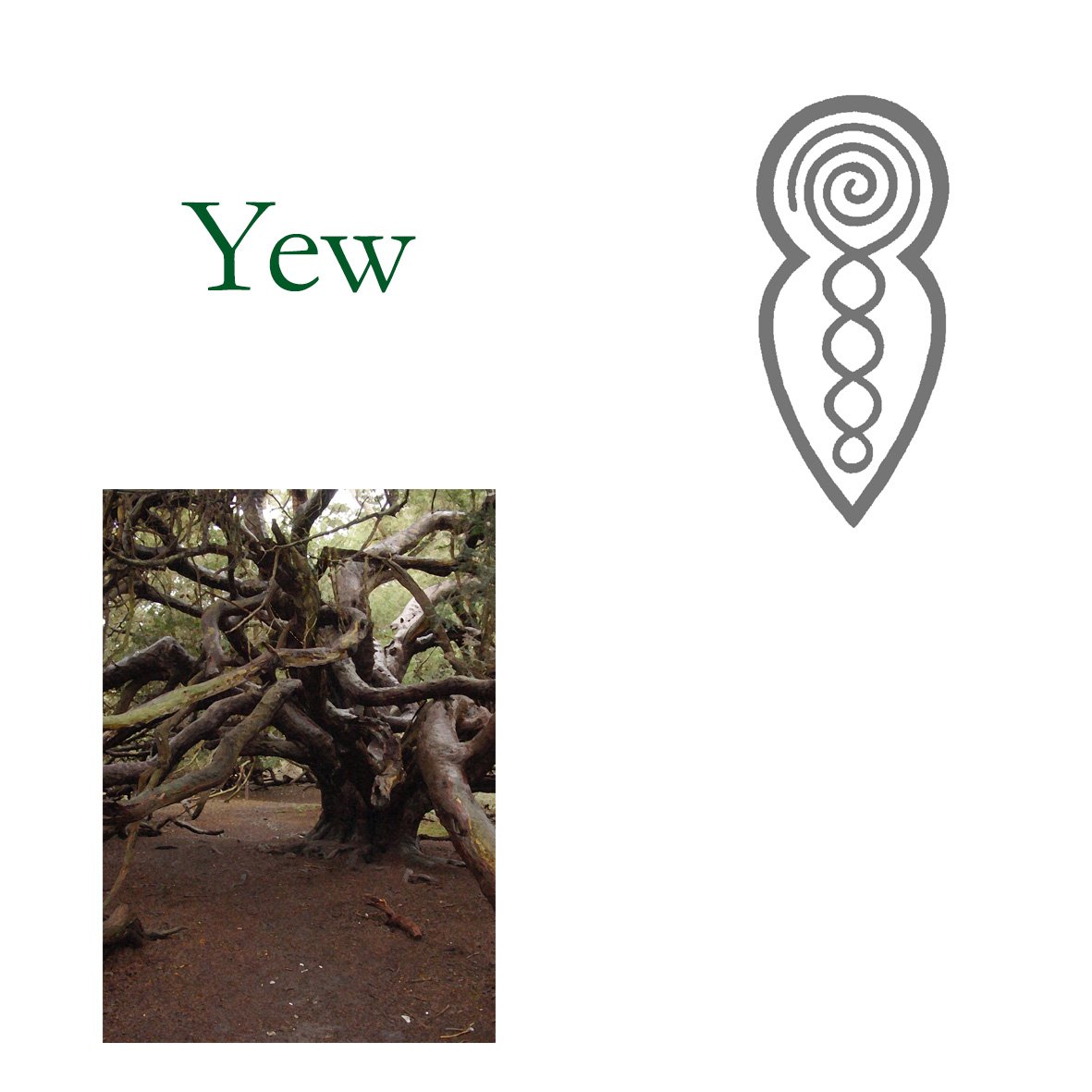YEW (Taxus baccata, Taxus baccata “fastigiata”)
Key: Protection
The yew is among the most ancient of trees and is certainly the longest lived tree in Europe, if not the world. It is resistant to most pests and conditions except flood, and because of the inherent strength and flexibility of the wood, will carry large boughs without breaking. Yew is not a tall tree growing to about 50ft (15m), but where allowed it will spread widely resting its lower boughs on the ground and even re-rooting itself to send up daughter trees. The dark green, shiny flat needles are familiar in most churchyards, as are the red arils – the fruit of the female trees in autumn. Female flowers are small and inconspicuous whilst male flowers can be seen in early spring, bright yellow and yielding huge amounts of pollen. A natural variety found by a farmer in County Fermanagh in the 1770’s is the origin of the Irish yew, a stately towering upright yew with many straight “spires”. All Irish yews derive from this single find in the wild.
Yew essence is the paramount energy to use with all issues of survival and protection. It activates and strengthens all organs and systems that have to do with maintaining energy levels and energy integrity, so it naturally tends to enhance the circulatory system and the immune system, particularly the liver functions. It can also give more energy to help the absorption of nutrients.
Depending on the status of the individual system yew essence can either increase or regulate available energy levels. As it is profoundly grounding, those who are unused to being grounded may take some time to adjust to the differences of feeling and perception.
The root chakra is enlivened with all the resultant qualities that brings: increased motivation, drive, energy, practicality, strength and focus on the present, as well as protection from external energy intrusions. The solar plexus chakra also is enhanced, and together these chakras protect from harm by activating the highest spiritual values of survival and protection. This includes the activation of far memory, discrimination skills and deeper understanding of one’s relationship to the planet and to the sun and its energy influence.
Once securely rooted into the planetary field it becomes possible with yew essence to explore many different times and places, accessing patterns held within the land and within the yew tree itself. This often directs the energy to the brow chakra where visionary experiences are processed and perceived.
Signature: The longevity and ability of yew trees to put on new growth, even after apparent death. The flexibility and strength of the wood and its red colouration.
Comment: An extract of yew bark, and recently from clippings, called taxol, has been found to prevent the growth of cancer cells. This finding threatened the existence of the remaining mature yews growing in the North West Coast forests of North America , which were cut and stripped of bark. Luckily it has now been found possible to extract the chemical from branch clippings. Hopefully this will prevent the extinction of perhaps the oldest living beings on this planet, the yew trees. The ages of churchyard yews are probably greatly underestimated. Growth is slow and erratic and not easy to measure. In many instances, however, it is more than likely that the church was sited near sacred yews rather than vice versa.

